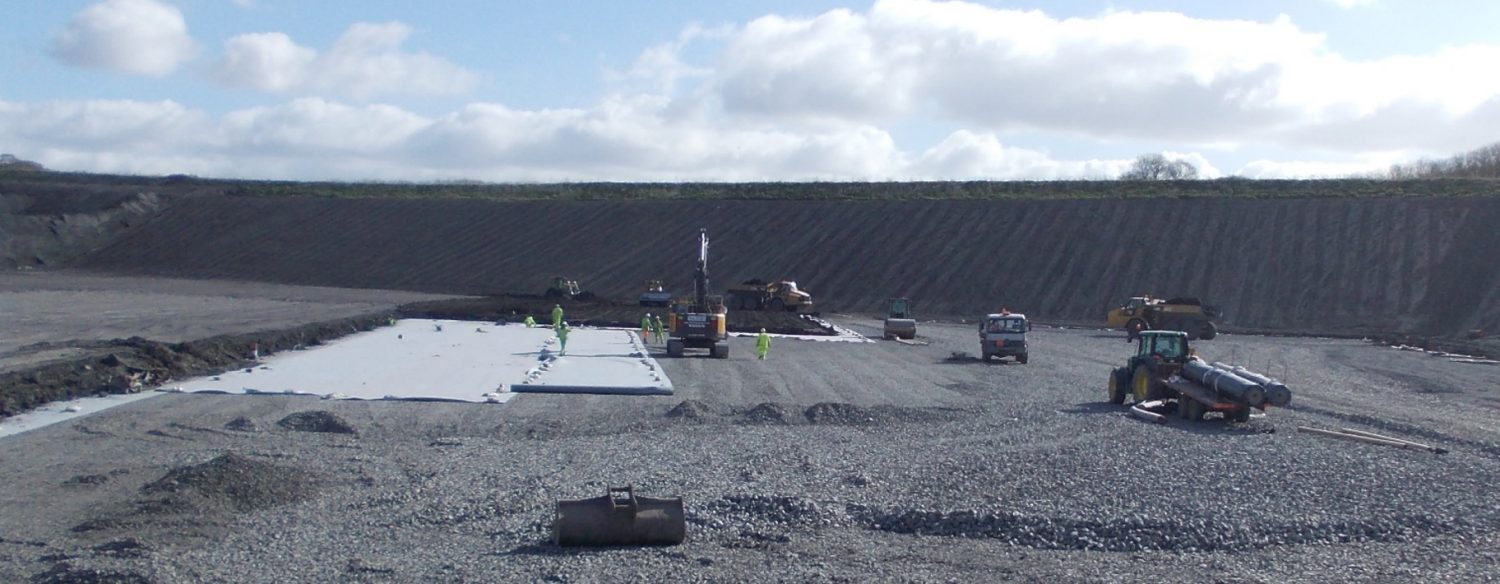
- BREAK OUT AND PROCESS 120,000M3 OF ROCK
- 23,000M3 OF COMPLIANT DRAINAGE PLACED
- PLACE AND COMPACT 73,000M3 OF ATTENUATING ASH LAYER
PROJECT OUTLINE
A redundant section of an existing limestone quarry required preparation to accept the deposition of PFA from the nearby, coal-fired Abwerthaw Power Station.
The previous phases were being rapidly filled and any delay in placement of the material would have a detrimental effect on the Power Stations ability to generate energy. The proposed Phase 3A works were forbidden to impact upon the PFA deposition on the neighbouring cells.
PROJECT DELIVERY
RWE Npower engaged Walters as Principal Contractor to construct the required PFA cell. The scheme required the excavation and re-profiling of the quarry floor to designed gradients to enable the proposed deposition material to drain freely. The quarry walls also had to be re-profiled to a 1:3 gradient and the project also required the installation of a welded liner and the deposition of a mineral layer for the attenuation of the heavy metals within the PFA.
Using the excavated rock, Walters produced to Construction Quality Assurance Plan specification, a drainage barrier layer which was deposited on the quarry sides and floor, using machine controlled and GPS enabled plant.
A thorough “rock excavatability” assessment was crucial to ensure utilisation of the correct plant. However it became apparent that rock strengths and bed thicknesses varied substantially over relatively short distances, this required a fully flexible approach regarding the suitability of plant, methods of extraction and projected outputs.
Walters worked closely with client RWE Npower and were able to quickly mobilise and deploy suitable plant from its extensive fleet, ensuring the project was completed on time and the deposition of PFA was never threatened. This was despite having to deal with highly weather susceptible material, variable rock deposits (and qualities) and a stringent CQA Plan endorsed by Natural Resources Wales.

